Pay-Per-View Video Streaming: What It Is and How It Works [2025 Update]
Pay-per-view video hosting is a great way to monetize your content. With pay-per-view (PPV), your viewers get the option to sample your content without commitment. This alone is a powerful and enticing method to gain new viewers.
Whether it is through pay-per-view video platform events, a sports streaming website, or for a media production company–based service, pay-per-view is an attractive, flexible option for viewers.
Professional live video streaming platforms make creating, hosting and monetizing PPV events easy and affordable. Because PPV streaming platforms also support live streaming, a professional-grade, on-demand PPV platform will enable seamless content sharing that earns you money without relying on advertisements that are irritating to viewers.
In this article, we’ll walk you through how PPV streaming and hosting works. We’ll detail what to consider when setting up pay-per-view streaming. Finally, we’ll reveal some top tips to help you reach your top PPV broadcasting potential.
Please note that pay-per-view streaming platform technology changes regularly. This post now reflects the most accurate information with updated pricing as of February 2025.
Table of Contents
- What is Video Monetization?
- Pay-Per-View Video Streaming: How does PPV work?
- How to Price PPV Video Content
- What is PPV Video Hosting?
- Pay-Per-View Video Platform Considerations
- Top Pay-Per-View Video Platform Options for 2025
- How to Create a Pay-Per-View Video Website
- FAQs
- Conclusion
What Is Video Monetization?
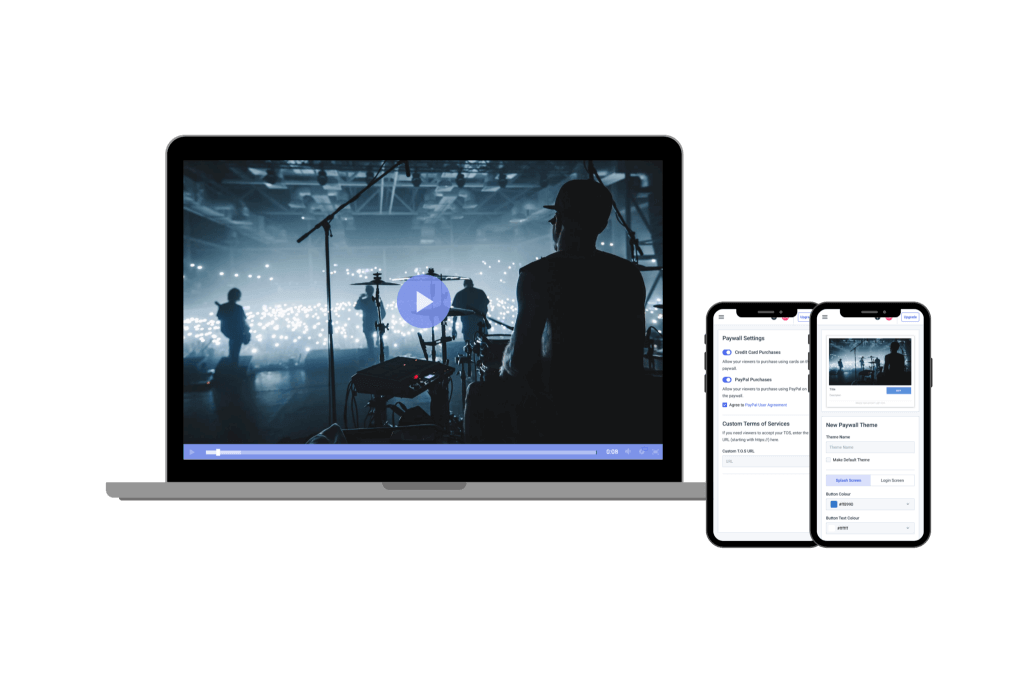
Let’s start by reviewing what video monetization is. The various strategies used for generating income from any video content you produce are called video monetization. Whenever a viewer watches your videos or downloads them, you get paid.
Each pay-per-view hosting provider gives content creators a different percentage of revenue generated from their videos. Many of these are specific to OTT, and these numbers can also vary depending on which OTT video monetization models you utilize.
Most professional broadcasters use one of the three following methods
- TVOD: transactional video-on-demand, also known as pay-per-view
- SVOD: subscription video-on-demand
- AVOD: advertising-based video-on-demand
Even though each advertising method contains the term “video-on-demand,” they can also be used for live streams. Each of the three primary video monetization methods serves a different purpose and is valuable for various reasons.
Pay-Per-View (TVOD)
TVOD, “transactional video on demand,” is more commonly known as pay-per-view. With TVOD, the viewer pays directly for the specific content they want to watch on-demand videos.
Pay-per-view is an excellent monetization method when viewers only want to access and pay for any particular content. With pay-per-view, viewers generally have access to that content for a specific time or an exact number of views.
For example, a streaming service that rents video content uses pay-per-view monetization. Or a streaming service selling tickets to a live virtual concert uses a pay-per-view monetization method.
Subscriptions (SVOD)
SVOD formally stands for “subscription video on demand.” With subscription-based monetization methods, viewers purchase access to your video library for a set amount of time.
Subscription and PPV video models run weekly, monthly, quarterly, or annually. It is common for subscription services to offer a free trial period to entice viewers to pay for more extended access to your video library.
Advertisements (AVOD)
AVOD, “advertising-based video on demand,” refers to ad-based monetization. You will run ads before, during, or after your videos. Sponsors pay for the advertisements.
On-demand videos allow viewers to watch your content for free without paying you directly. Technically, the viewers pay you by watching the advertisements that run with your content. You can work with an established advertising network or seek independent advertising partnerships.
Similarly, you can use ad-based video monetization on its own. Or you can use ad-based monetization with PPV or subscription-based monetization, creating a hybrid monetization model.
Pay-Per-View Video Streaming: How does PPV work?

Pay-per-view streaming allows you to make money by charging for access to specific content. There are multiple ways to charge for pay-per-view content. For example, you can enable viewers to rent the content for a set number of hours. Or you can allow viewers to buy the content, giving them unlimited access.
With pay-per-view monetization, you don’t have to run advertisements on your content. That allows you greater control over your viewer’s experience.
With pay-per-view monetization, you use an integrated paywall to collect payment. It is a relatively effortless way to generate revenue.
One of the biggest challenges with pay-per-view video hosting is having a well-developed video monetization strategy and selecting the right video hosting provider for your needs.
How to Price PPV Video Content
Like live-streaming, there are many different ways to charge for pay-per-view video content hosting on a video platform. The type of content can also impact what you charge.
Access to a Singular Video
If you are trying to charge for access to a specific video, we recommend starting low, setting around $2 for one to two days of admission. You can also upsell, offering one-day access for $2 or unlimited access for $8.
That allows you to make more money from people who don’t want the pressure to access and use your content in a set amount of time, as the case might be with a live stream. Many viewers find it more valuable.
Access to a Special Event
If you are charging for a special one-time event, such as a concert live stream, play, or conference typically held in person, you may want to base what you charge on the in-person event’s price.
Remember that most people expect to pay less for virtual access via live streams.
So if you have an in-person event that you are charging $50 for, you would want to charge $25-$30 for virtual access to the event’s live stream. That way, you can earn while reducing the expense of hosting people while still providing value to your customers.
Access to Educational Content
Educational content has been gaining traction with the masses ever since COVID-19 shut down universities and schools around the globe. In addition, you can sell access to video courses that teach a specific skill.
For educational live streams, your price will depend on the market value for that educational content. Therefore, you should research what others charge for similar courses and price your video course competitively.
General Pricing Guidelines:
You should follow a few general guidelines regarding pricing and access to pay-per-view content.
- Make the access longer than the content: If the content is two hours long, give people at least four hours to view the content. Access should be at least double the run time of the video. That way, if a viewer has technical issues regarding the content or gets interpreted and has to return to the content, the access is long enough to allow for that.
- Be clear about access time: Second, you must be clear about how long someone has access to the content. It should be easy for your viewers to know what they purchase when they can access it, and how long that access will last.
- Compare pricing: Third, you should research your competitors and make sure that your pricing is competitive and offers a higher value.
You may have to adjust your pricing, and that is okay. However, you must find the right price for your audience and business. That can take some trial and error.
What is PPV Video Hosting?
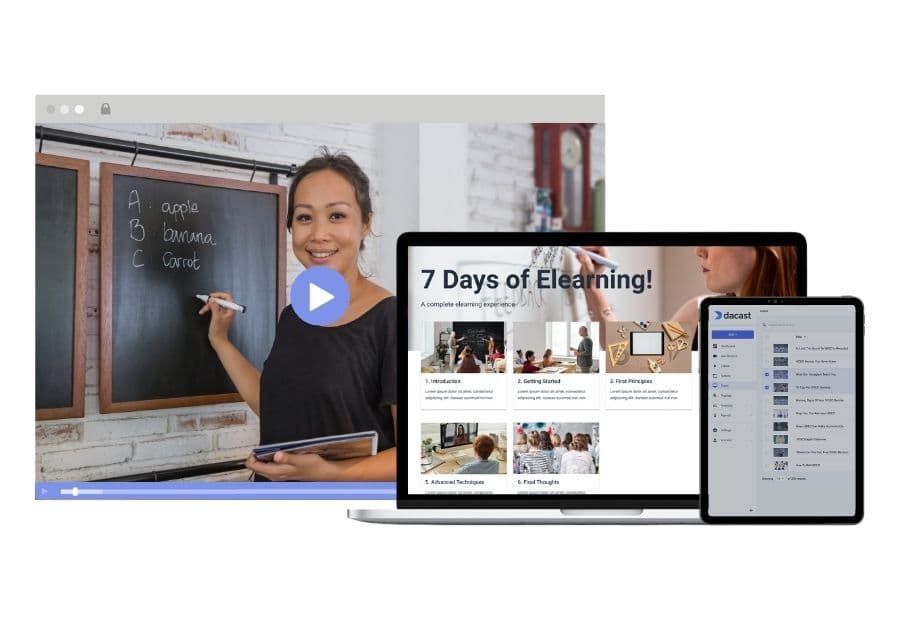
Pay-per-view streaming enables you to charge users whenever they access your content. That requires the support of a streaming platform with TVOD monetization capabilities. You must invest in professional live-streaming solutions for your live-streaming events because free video platforms like YouTube are not equipped with pay-per-view hosting tools.
Professional video and audio streaming solutions range from less than $100/month to more than $1000/month. Your choice will depend on your budget, streaming goals, and the features you need to make those goals a reality.
Dacast is an excellent solution for broadcasters that need pay-per-view hosting support. Our platform makes it easy to set up TVOD monetization in a few simple clicks. We also support AVOD and SVOD, so you can modify your OTT advertising strategy if you see fit.
Our platform has many professional video-sharing and hosting tools available. We invite you to check out our streaming platform comparison post to see how Dacast stacks against pay-per-view hosting solutions like Vimeo, Brightcove, IBM Cloud Video, and more.
Pay-Per-View Video Platform Considerations
As you compare software options for PPV hosting, there are several things that you should consider: the reliability of the software’s CDN, whether it supports mobile streaming, how much the software will cost, the content management system used, scalability, privacy, and more. Of course, these considerations include the platform’s support for PPV monetization.
Let’s look at a little more context for some of the primary concerns you’ll need to keep in mind when selecting a pay-per-view video platform.
1. Content Delivery
The best pay-per-view hosting and streaming platform enables your content’s smooth, glitch-free delivery to your global audience. We recommend choosing a streaming service with a high-quality, global content delivery network (CDN).
A CDN uses a server network to distribute your content around a geographic region. Ideally, you’d want a CDN provider with servers around the world.
Dacast, for example, partners with top-tier live-streaming CDNs, such as Limelight and Akamai, designed to increase the speed of your content delivery, reduce buffering and maximize streaming quality. In addition, when your viewers request content from a globally connected CDN, it automatically routes them to the closest available server.
2. Mobile Streaming
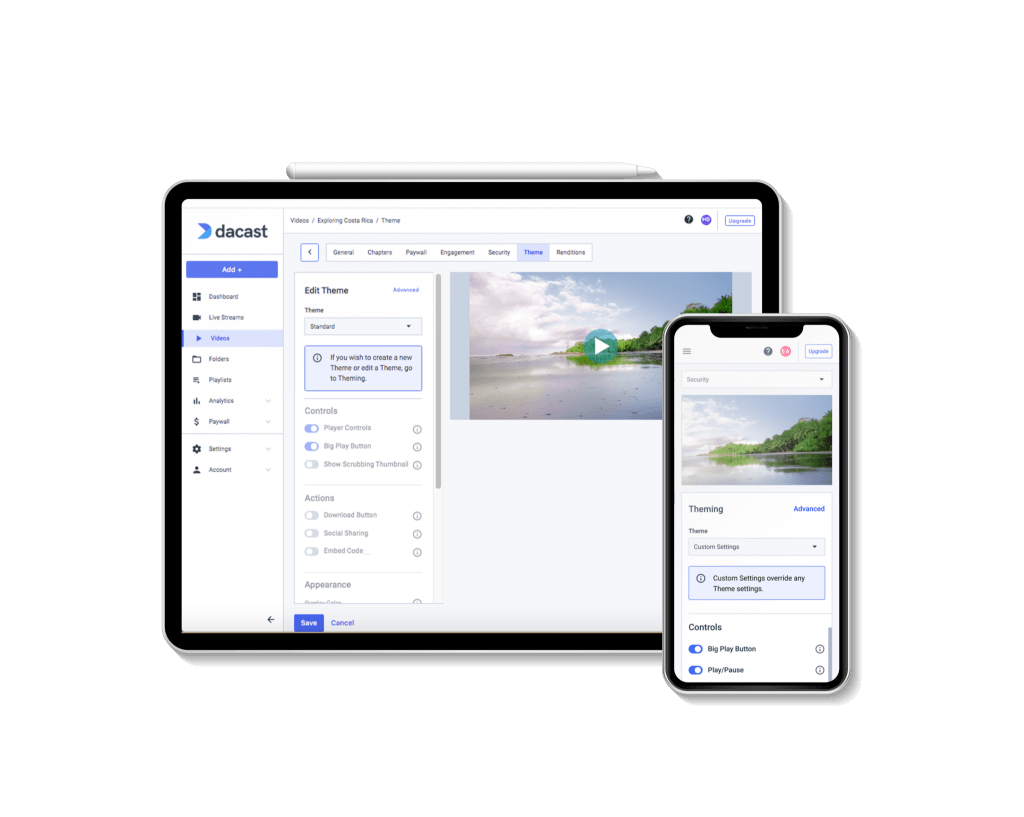
Another thing you want to consider is whether or not your video hosting software supports mobile streaming so that your viewers can access your content via multiple devices. Most customers prefer a video platform where they can stream pay-per-view live on apps from their smartphones, tablets, smart TVs, and computers.
An all-device HTML5 video player with a fully integrated paywall will do the trick.
One pay-per-view service that masters all device access is HBO GO. It offers access via multiple consumer mobile platforms, including Xbox 360, Smart TVs, Roku, tablets, and more.
That diversity of access contributed to its #1 ranking in domestic pay television service in the United States in 2013 when the trend was on the rise.
Think of the audience you could reach and the money you could make if you utilized an all-device video player like the one offered by Dacast.
3. Fees
The cost of using a pay-per-view hosting provider will depend on the software you select. The software you choose will depend on your internet latency, streaming needs, and the features you’re looking for. Most services use tiered pricing to help you pay for only what you need, although there are other pricing models, such as purchasing and redeeming credits.
The following section will take a closer look at real pricing examples. But first, it’s essential to consider your need for PPV streaming services and how quickly you’d like to scale that need..
4. Video CMS
A PPV streaming service is only as good as its content management system. Accessing your company’s content becomes a barrier limiting your reach if it’s not easy or intuitive. A video content CMS should make it easy to organize, access, and manage to monetize your content.
5. Scalability
When a company first sets up pay-per-view video, it needs a smaller price tier that lets it experiment and learn to manage its content. Then, as they grow, they need a pay-per-view streaming platform that grows with them. You’ll want to avoid working with a company that locks you into too much service you need before you need it.
6. Free Trial Availability
Reviewing reviews, comparing features, and considering pricing doesn’t prepare you to implement pay-per-view streaming services. The only thing that can show you whether you have the best pay-per-view video hosting for your organization is to try it out. That’s why it’s critical to consider whether the pay-per-view video platform you’re considering has a free trial period.
Top Pay-Per-View Video Platform Options
Finding an online video streaming platform that supports a secure, integrated paywall can be complex. Some professional video platforms only support ad-based monetization or subscriptions. Other video platforms need monetization support.
We’ve gone through some of the top video platforms on the market and pulled out the best pay-per-view hosting options. Let’s look at some of the best pay-per-view video platform options for hosting.
1. Dacast
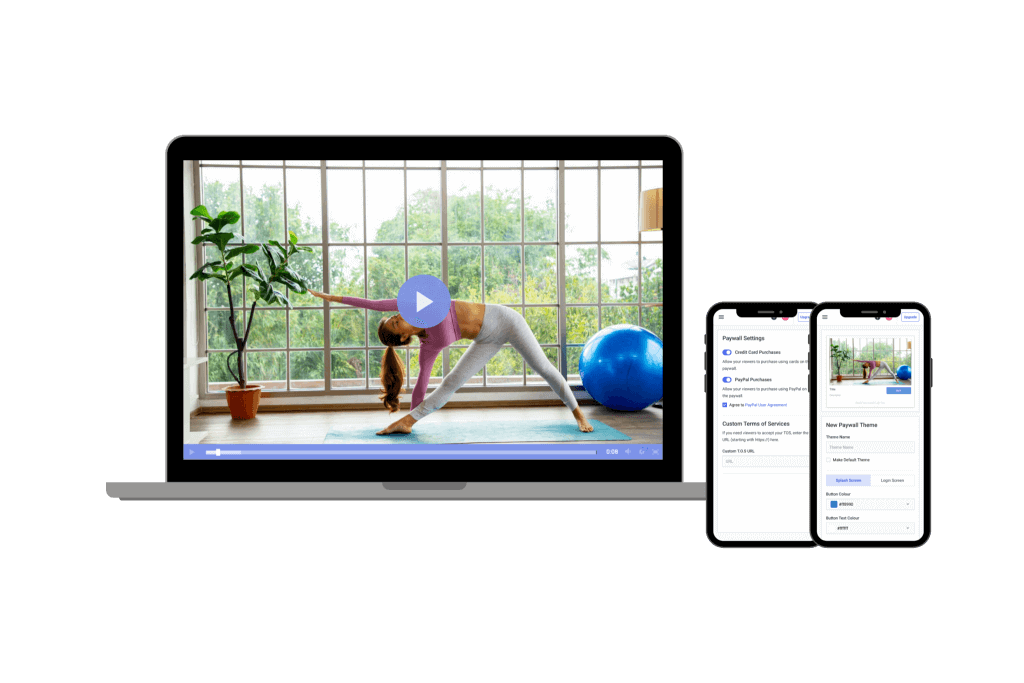
Dacast is an excellent choice for broadcasters looking for a reliable pay-per-view video platform. Our video-hosting platform uses a secure paywall built into the video player. That way, you and your viewers can rest assured that each transaction is safe.
In addition to pay-per-view, the Dacast platform supports ad-based and subscription-based advertising. That gives broadcasters some flexibility in their monetization options. They even have the option to use a hybrid model that uses multiple monetization options in one.
Some other helpful monetization features from Dacast include promo codes, group pricing, and currency conversation, helping broadcasters reach various audiences successfully.
Aside from the monetization skills, Dacast is known for its powerful HTML5 video player that is secure, universal, customizable, and easy to embed in any website, app, or workflow. In addition, Dacast partners with powerful CDNs that you can trust to deliver your content worldwide, even video hosting in China, with our ICP license.
Pricing:
Dacast offers multiple plans for professional broadcasters, including:
- Starter: $39/month billed annually (includes 2.4 TB bandwidth and 500 GB storage)
- Event: $63/month billed annually (includes 6 TB bandwidth and 250 GB storage)
- Scale: $165/month billed annually (includes 24 TB bandwidth and 2 TB storage)
- Custom: contact sales for custom pricing plans
Dacast offers new users 14 days to test drive the software and figure out which service tier meets their needs.
2. Vimeo OTT

Vimeo is a longtime player in a video streaming game that was originally intended for consumer use. However, Vimeo acquired Livestream in 2017 and now offers premium plans under that branch of the business.
Vimeo OTT has live streaming features that supports PPV monetization. This offering is designed for broadcasters who want to create OTT platforms like Netflix, Hulu, or Disney+.
Their OTT platform uses an HTML5 video player, so it is fully capable of all-device streaming. As for content delivery, Vimeo uses Akamai, CloudFront, and others for a multi-CDN approach.
Pricing:
Vimeo offers basic video hosting plans that are suitable for content creators and startups. These include:
- Free: $0/month; 1 GB storage, creation and editing, screen recording
- Starter: $20/month; 100 GB storage, auto closed captioning, custom URLs and video player, privacy tools
- Standard: $41/month; 1 TB storage, engagement and social analytics, AI script generator, teleprompter, brand kit
- Advanced: $108/month; 5 TB storage, stream to multiple destinations, host live broadcasts and webinars, AI-generated chapters and text summaries
- Enterprise: Custom pricing; more storage and bandwidth, advanced AI capabilities, quality events, dedicated support
Vimeo OTT Pricing:
- Vimeo’s OTT solution is priced separately from the regular Vimeo packages. There are two plans: Starter and Enterprise.
- Starter Pricing: $1/subscriber per month (or 10% of one-time purchases)
- Enterprise Pricing: Contact sales
This OTT-specific pricing package comes with the Vimeo.com relationship. These plans include all the basics for starting your web-based OTT channel, as well as growing your OTT business online.
All plans are billed annually.
Vimeo is great if you want to maximize the usage of your content by turning your live streams into VOD content.
3. Kaltura

Kaltura is an open-source and customizable video content management platform, meaning users can use APIs to integrate any program they like. That means you can incorporate programs that support pay-per-view and other monetization methods to build a pay-per-view video hosting platform
Kaltura is an excellent option for broadcasters with unique requirements since it has all these customization options.
Like Dacast, Kaltura uses an all-device HTML5 video player. However, users can rely on Kaltura’s many CDN partnerships regarding content delivery.
Pricing:
Prices are based on the solutions you’re looking for. These include but are not limited to:
- Limited Trial: $1 for two webinars
- Business: $199/month (or $150/month when billed annually)
- Enterprise: Custom pricing
- Free trial: 14 days; up to 25 participants per session
- Basic: $19/month (or $17/month when billed annually); up to 8 participants per session and 8 hrs of cloud recording
- Pro: $55/month (or $50/month when billed annually); up to 25 participants per session and 15 hrs of cloud recording
- Business: $125/month (or $115/month when billed annually); up to 100 participants per session and up to 25 hrs of cloud recording
- Business Plus: Custom pricing for up to 300 participants per session, unlimited sessions and custom storage needs
- Annual discounts: Discounted pricing packages available for any scale and use-case, enterprise SLA, and developer support
- Limited trial account: $1 for $100 worth of credits for 30 days for testing and experimentation, with no commitments
- Pay as you go – You pay only for what you use at these credit levels:
- Base plan: $20 one-time annual fee + monthly usage fees
Other services include virtual events, video portal town halls, video messaging, meetings and more.
4. Muvi
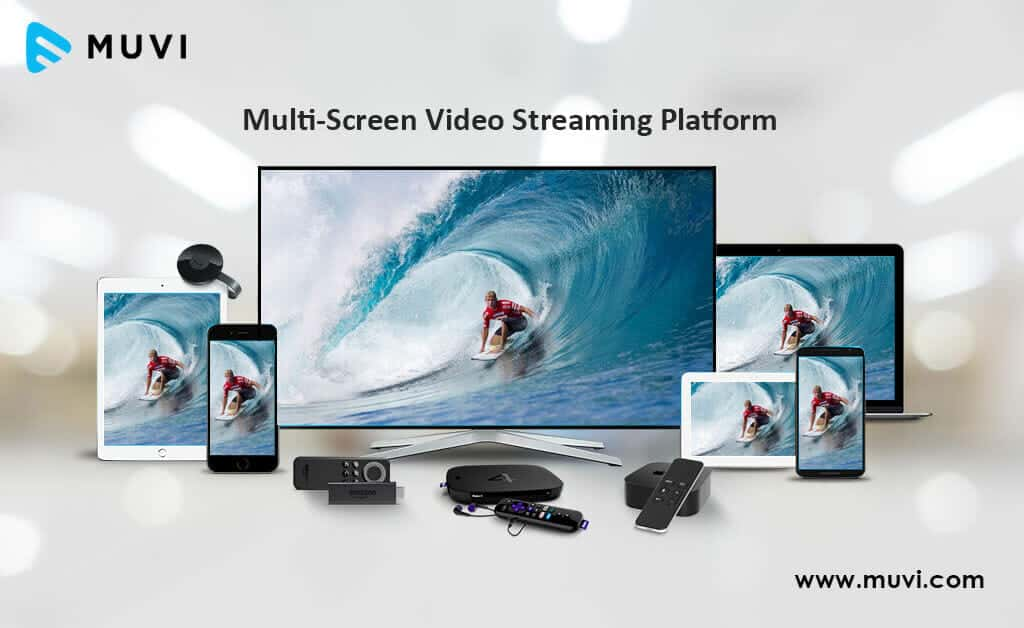
Muvi is an OTT video platform that supports pay-per-view streaming. The main functionality of Muvi is building scalable OTT streaming services, comparable to Hulu or Netflix, relatively quickly.
Muvi uses an HTML5 video player, meaning you can reach your viewers on any device, browser, or operating system.
Pricing:
Muvi has a very wide spectrum of pricing plans divided in 7 categories, namely One, Live, Flex, Player SDK, Playout, TV, and Alie.
The pricing for the Muvi One category includes the following plans:
- Standard: $399/month
- Professional: $1,499/month
- Enterprise: $3,900/month
- Ultimate: Contact sales for price
Each plan has different features, such as the number of concurrent users, hosting options, and add-ons like the Alie recommendation engine.
The pricing breakdown for the Muvi Live plans is as followed:
- Standard: $99/month
- Professional: $299/month
- Enterprise: $799/month
Each plan includes unlimited events and meetings, Ad-free high quality Streaming, enterprise grade security, and custom branding.
Muvi Flex includes the following plans :
- Standard: $199/month
- Professional: $899/month
- Enterprise: $2,899/month
Each plan includes unlimited content and views, with varying features like the number of concurrent users, hosting options, and customization availability.
The Muvi Player SDK pricing includes the following:
- Pay as You Go: $0/month + $0.001 per view (first 100 views are free)
- Enterprise: $499/month + $0.001 per view (first 100,000 views are free each month). You’ll also need to pay $99/month for each additional platform.
Muvi Playout includes the following plans:
- Standard: $199/month
- Professional: $499/month
- Enterprise: $1,999/month
These plans differ in features such as the number of concurrent viewers, channels, and customization options. The Enterprise plan also offers dedicated servers.
The Muvi TV pricing category has only one Standard plan. You’ll have to pay $9/month and an additional 9% flat commission on content sales. This plan supports global distribution, and features include unlimited content, views, and the ability to publish and monetize quickly.
And the seventh and last category is Muvi Alie which includes the following plans:
- Standard: $199/month
- Professional: $899/month
- Enterprise: $1,499/month
These plans differ in features such as ingestion features, training and recommendation requests.
5. Uscreen

Uscreen is another reliable pay-per-view video platform. The platform is known for its wide range of monetization tools. In addition to pay-per-view, Uscreen supports video rentals, subscriptions, free trials, bundles, and lifetime access purchases.
Uscreen’s video player syncs with Stripe, PayPal, and other well-known payment processing tools, making its paywall reliable and trustworthy. Another exciting aspect of Uscreen’s video monetization platform is that it supports affiliate management of paying commissions to people who refer new viewers.
The HTML5 video player on Uscreen is capable of full high-definition streaming, meaning you can deliver high-quality video content to viewers on any device.
As for content delivery, Uscreen uses Akamai primarily but allows users to bring their own CDN.
Pricing:
Uscreen has three different pricing plans for broadcasting. The pricing below reflects rates when billed monthly and include:
- Growth: $199/month
- App Essentials: $599/month
- Build Your Own: Custom pricing
6. Brightcove

Brightcove is one of the best pay-per-view platforms. It offers robust features for businesses and content creators. As a top pay-per-view streaming app, Brightcove enables smooth, high-quality PPV live stream experiences. With its advanced pay-per-view software, it supports secure transactions, customizable event setups, and seamless user experiences. Brightcove is also known for being among the top pay-per-view providers, offering reliable solutions for hosting large-scale events. Compared to other pay-per-view streaming sites, Brightcove stands out with its comprehensive analytics and marketing tools. Its reliable pay-per-view live streaming options make it a top choice for professional events and content monetization.
Pricing:
Brightcove builds custom pricing plans to suit enterprise streaming needs. Here is what we currently know about their pricing structure:
- Basic Plan: Starts at $99 per user per month, which includes core video hosting and management functionalities. This plan is well-suited for businesses with basic video needs, such as small content libraries or internal communications.
- Enterprise-Level Plans: These plans are highly customizable and include advanced features such as live streaming, in-depth analytics, security options, and robust integrations. Pricing is tailored depending on the specific needs of the business, including audience size, storage requirements, and additional services like video monetization and support.
- Customization Costs: Enterprises may face additional expenses for features like platform customization, data migration, employee training, and ongoing maintenance. These costs can range from a few thousand dollars to significantly more, depending on the complexity of the requirements.
- Free Trial: Brightcove offers a free trial for prospective users to test its features before committing to a subscription, which is a helpful option for evaluating its capabilities in real-world scenarios.
Interested broadcasters can contact their sales department to receive a quote or sign up for a 30-day free trial. When you need something simple with complex tools, Brightcove is a good choice.
7. IBM Cloud Video

IBM Video Streaming is one of the best pay-per-view streaming platform because of its reliable pay per view streaming for live events, webinars, and corporate broadcasts. It provides secure and high-quality live streaming channels, making it ideal for businesses and creators looking to monetize their content. As a trusted pay per view website, IBM Video Streaming delivers flexible pay-per-view services with robust analytics, audience management, and global reach. With professional-grade pay-per-view solutions, it’s easy to create and manage paid events. Pay-per-view examples include conferences, live training sessions, and exclusive performances, all with seamless, secure viewing experiences for audiences.
Pricing:
The pricing plans for the IBM Cloud Video include:
- Start Trial – Video Streaming: Give it a free test drive for 30 days
- Silver: Affordable Essentials, 100 viewer hours, 5 channels, 1 TB video storage, starting at $145/month
- Gold: Standard business features, 2,000 viewer hours, 10 channels, 2 TB video storage, starting at $729/month
- Platinum: Premium Volume scale, 5,000 viewer hours, 20 channels, 5 TB video storage, starting at $1,460/month
- Custom: Please contact IBM Cloud video for custom plan pricing as well as payment plans
IBM Video Streaming is a great platform for live streaming content for your business, and turning live streams into VOD. That makes it perfect for OTT service providers who want to host live streams and on-demand videos.
8. YouTube

YouTube is a great pay-per-view streaming platform alternative, offering a user-friendly experience for live events and exclusive content. As a leading PPV platform, YouTube allows creators and businesses to host events like concerts, sports, and special shows, giving viewers the chance to access high-quality content on demand.
One of the key benefits of YouTube as a pay-per-view platform is its vast audience reach and ease of use. As a trusted pay-per-view website, users can conveniently purchase and watch events through seamless transactions. YouTube’s PPV streaming services also support HD video and smooth performance, making it ideal for a high-quality pay-per-view live stream. Whether hosting a pay-per-view online event or browsing through pay-per-view sites, YouTube ensures accessibility and reliable PPV live stream experiences.
Pricing:
YouTube is completely free to use. But for PPV, prices can vary from as little as $4.99 to $64.99, depending on several factors such as the type of event streamed and location.
How to Create a Pay-Per-View Video Website
Creating your own pay-per-view (PPV) video website can be an empowering way to take full control of your video monetization strategy. While it requires effort and technical know-how, building a custom platform allows you to scale your offerings, establish a unique brand identity, and maintain greater flexibility compared to third-party hosting services. This guide will walk you through the steps of launching your PPV website, from choosing the right video provider to setting up and securing your platform for success.
To get started, here are our recommended steps:
1. Emphasize the Importance of Choosing the Right Video Provider
Selecting a suitable video provider is crucial for the success of your pay-per-view (PPV) platform. Look for providers that offer scalability, robust security features, and transparent pricing. Ensure they support multiple monetization options, such as one-time purchases, rentals, and subscriptions. Additionally, consider providers that offer white-label customization to maintain your brand identity. For instance, platforms like StreamingVideoProvider and Maestro provide comprehensive PPV solutions.
2. Detail the Process of Choosing a Domain Name and Web Hosting Service
Your domain name should reflect your brand and be easy to remember. When selecting a web hosting service, prioritize those that offer reliable performance, sufficient bandwidth, and support for content management systems (CMS) like WordPress. Some hosting services provide one-click installations for WordPress, simplifying the setup process. Ensure that the hosting service can handle video content delivery efficiently.
3. Provide a Step-by-Step Guide to Setting Up WordPress for PPV Videos
After installing WordPress or other website CMS, consider the following steps:
- Select a Suitable Theme: Choose a responsive and video-friendly theme that aligns with your brand.
- Install Essential Plugins: While a dedicated PPV plugin may not be necessary if your video provider handles monetization, consider plugins for SEO optimization, security enhancements, and performance improvements.
- Integrate the Video Player: Use the embed codes provided by your video hosting platform to add videos to your site. This can typically be done by adding a Custom HTML block in the WordPress editor and pasting the embed code.
4. Elaborate on Configuring PPV Settings on Your Hosting Platform
Once your video content is uploaded to your hosting platform, configure the PPV settings:
- Set Pricing: Determine the price for each video or live stream, considering factors like content exclusivity and production costs.
- Select Currency: Choose the currency that aligns with your target audience.
- Define Access Parameters: Decide whether viewers can purchase, rent, or subscribe to your content. Specify access duration and any viewing limitations.
- Payment Gateway Integration: Ensure that your platform is connected to a reliable payment gateway to process transactions securely.
5. Highlight the Importance of Website Content and User Engagement
Beyond setting up the technical aspects, focus on creating engaging content:
- Develop Informative Pages: Include an “About Us” page, contact information, and FAQs to build trust with your audience.
- Create Teaser Content: Offer free clips or previews to entice potential viewers.
- Schedule Content Releases: Plan and announce upcoming live streams or new video releases to maintain audience interest.
- Implement Marketing Strategies: Utilize email newsletters, social media, and SEO tactics to drive traffic to your site.
6. Discuss Security Measures to Protect Your Content
Protecting your content from unauthorized access and piracy is essential:
- Digital Rights Management (DRM): Use DRM technologies to prevent unauthorized distribution.
- Watermarking: Apply watermarks to your videos to deter piracy.
- Secure Payment Processing: Ensure that your payment gateway complies with industry security standards to protect user data.
The work’s not done yet. Developing a pay-per-view website involves selecting a video hosting provider, choosing a domain name and web hosting service, and setting up a CMS like WordPress to integrate video players and manage content. Once the technical aspects are configured, it’s essential to focus on content creation, user engagement, and security to deliver a professional and reliable experience to your viewers. With careful planning and execution, your PPV website can serve as a scalable and lucrative solution for monetizing your video content.
FAQ:
1. How do I set up pay-per-view video?
To set up pay-per-view video, you need to choose a streaming service that offers pay-per-view or subscription options, such as Dacast. Then, create a new live stream or VOD, enable the paywall or monetization features, and set the duration and price for your content. The exact steps may vary depending on your chosen streaming service.
2. Does Vimeo offer pay-per-view?
Yes, Vimeo offers pay-per-view as part of their Vimeo OTT service. You can set up a paywall for your videos and charge viewers to watch them. Naturally, you could also consider alternatives such as Dacast, Kaltura, and Muvi to see which one offers the most value.
3. What is the difference between PPV and VOD?
Pay-per-view (PPV) refers to a model where viewers pay to watch a specific piece of content, such as a live event or one-time release. Meanwhile, video-on-demand (VOD) refers to a model where viewers can access a library of content at any time, usually for a subscription fee.
4. What streaming service has pay-per-view?
Dacast, Vimeo, Kaltura, Muvi, Uscreen, and even YouTube offer pay-per-view options.
5. How do I create a video paywall?
To create a video paywall, you need to choose a streaming service that offers pay-per-view or subscription options, such as Dacast. Then, you need to create a new live stream or VOD, enable the paywall feature, and set the price for your content. A video paywall can be either hard (requires payment before watching any part of the video) or soft (offers a preview or teaser before asking for payment).
Conclusion
Pay-per-view video hosting is an extremely valuable method for monetizing video content without distracting ads that could drive viewers away. With the right platform, streaming video online using the PPV service format is quick, easy and intuitive.
For further information on monetizing using this method, check out our pay-per-view video walkthrough. Furthermore, with a Dacast account, your customers can stream PPV with you in minutes.
Did you know you can try Dacast’s professional video hosting tools and PPV features? Take advantage of Dacast’s 14-day risk-free trial. No credit card required.
For regular live streaming tips and exclusive offers, you can join our LinkedIn group.
 Stream
Stream Connect
Connect Manage
Manage Measure
Measure Events
Events Business
Business Organizations
Organizations Entertainment and Media
Entertainment and Media API
API Tools
Tools Learning Center
Learning Center Support
Support Support Articles
Support Articles